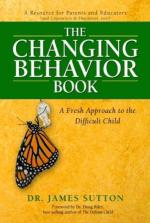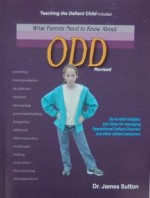Comfort in Chaos: Understanding Trauma Brain (Shenandoah Chefalo)
I make no bones about it: As a foster child, I don’t think I was an easy person to get along with. I certainly wasn’t trying to make bonds or connections with those around me. Of course, I knew nothing at the time about trauma brain.
 I went into foster care at the age of 13. My life prior to entering the system was one of immense dysfunction; I had practically raised myself. My mom was rarely around, and, when she was, it was usually to tell me that we were moving. We moved over 50 times and I went to more than 35 schools in my life before the age of 13.
I went into foster care at the age of 13. My life prior to entering the system was one of immense dysfunction; I had practically raised myself. My mom was rarely around, and, when she was, it was usually to tell me that we were moving. We moved over 50 times and I went to more than 35 schools in my life before the age of 13.
Chaos had become my normal.
In learning to “cover” for my mom’s actions, and watching my mom talk her way out of almost any situation, I learned a valuable skill early on: lying. It was a skill that saved me numerous times from severe punishments.
Foster Care and Beyond
I thought foster care would be a positive solution to the life I was living. What I found was more of the same as loneliness, isolation and depression followed me into care. I had become disconnected from my feelings and simply accepted that I was unable to love … and was unlovable. I continued behaviors from the past and found no solace in the families that took me in.
I ultimately aged out of the system at 18 and was turned loose onto the world with no real connections to other people. When I hit the college campus, a feat I wouldn’t learn was remarkable until later, I made a pact with myself to never talk about my past with anyone. I was a good liar, and, because of that skill, I kept that promise to myself for more than 20 years.
Trauma Brain
I spent those years, hiding the past, keeping myself at arms length from any real relationships, and doing the one thing I was knew I was good at: lying. I didn’t know it at the time, but I found myself in what I now refer to as “trauma brain.” I would go to that comfortable place in my mind, a place of Fight, Flight, Freeze or Appease.
For me, there was comfort in chaos. When things in my life were going well, I looked for and caused chaos for myself so I could feel “comfortable.” Of course I didn’t realize, at least not consciously, that I was doing it until I started to become increasingly unsettled with the life I was living. I had a good job, managed to get married and had a child, but I was only comfortable in the unknown.
I wanted to change.
For most of my life, I chalked up my behavior to the idea that I was just “crazy,” a concept I was comfortable with. I figured it was only a matter of time until I turned into my “crazy” mother. I was working in a law office at this time, and I would watch clients with similar tendencies. I had wondered about their past and when I started to ask, I was surprised by how many of them had been former foster kids, also. I had always assumed there had been very few kids like me. The numbers appearing in my office were off-putting, to say the least.
 Self-help Search
Self-help Search
Flash forward. In an effort to find peace in my life, I initially turned to self-help books. I found a little relief, but often found myself going back to old habits. I started to realize that hiding my demons was only making me more depressed and more disconnected.
I tried everything: more books, journaling, yoga, meditation. and hiking. Physical exertion was having an impact, but it only lasted a few hours, then I was back in my mind, returning to old habits.
I finally realized that I had to tell my story. I wrote Garbage Bag Suitcase and began diving into an understanding of trauma and its effects on the brain.
The research began turning me onto new books. Suddenly I understood my “trauma brain” in a whole new way. I wasn’t “crazy;” my brain was just programed to constantly be in Fight, Flight, Freeze, Appease mode, and this knowledge changed everything for me.
Like a Sledding Hill
I recently heard Dr. Cathy Fialon explain trauma brain as a sledding hill. When you go sledding the path becomes worn, so you gain greater speed. The well-worn path is easy and comfortable. However, if you take your sled over a few feet to a part of the hill that hasn’t been used, it becomes more difficult to slide down; you can’t gain momentum and you often start and stop a lot. It takes time, she explained, to break in this new path and make it again enjoyable for sledding.
I understood exactly what she meant. My learned reactions as a child had become the well-worn sledding hill. It was easy for me to go down that road, regardless of the effects. But when I started working on myself (i.e. taking my sled to a new hill) it was difficult. Don’t get me wrong, while I’m still working on breaking in my new path, every once in awhile I like to take a spin on the old one.
That is “trauma brain” retraining ourselves, and oftentimes those we care about, how to break in a new way of thinking. I am thrilled to say I have a new career that allows me to help others recognize their trauma brain and the trauma brain of those around them, and to help themselves and others heal in a brand new way.
After all, we all deserve to try out a new place to sled. ###
 Shenandoah Chefalo is a former foster youth and an advocate. She is the author of the memoir, Garbage Bag Suitcase, and co-founder of Good Harbor Institute, an organization focused on ensuring sustainable, implemented trauma care within organizations and individuals. You can learn more about her and her work at www.garbagebagsuitcase.com or www.goodharborinst.com
Shenandoah Chefalo is a former foster youth and an advocate. She is the author of the memoir, Garbage Bag Suitcase, and co-founder of Good Harbor Institute, an organization focused on ensuring sustainable, implemented trauma care within organizations and individuals. You can learn more about her and her work at www.garbagebagsuitcase.com or www.goodharborinst.com
No comments yet.
 This blog, It’s About Them, was founded in 2006 by child and adolescent psychologist, Dr. James Sutton. Content will vary, but the message here promotes courage, kindness, vision and the powers of the human spirit in ourselves and our children. Dr. Sutton can be reached at
This blog, It’s About Them, was founded in 2006 by child and adolescent psychologist, Dr. James Sutton. Content will vary, but the message here promotes courage, kindness, vision and the powers of the human spirit in ourselves and our children. Dr. Sutton can be reached at 









Leave a comment